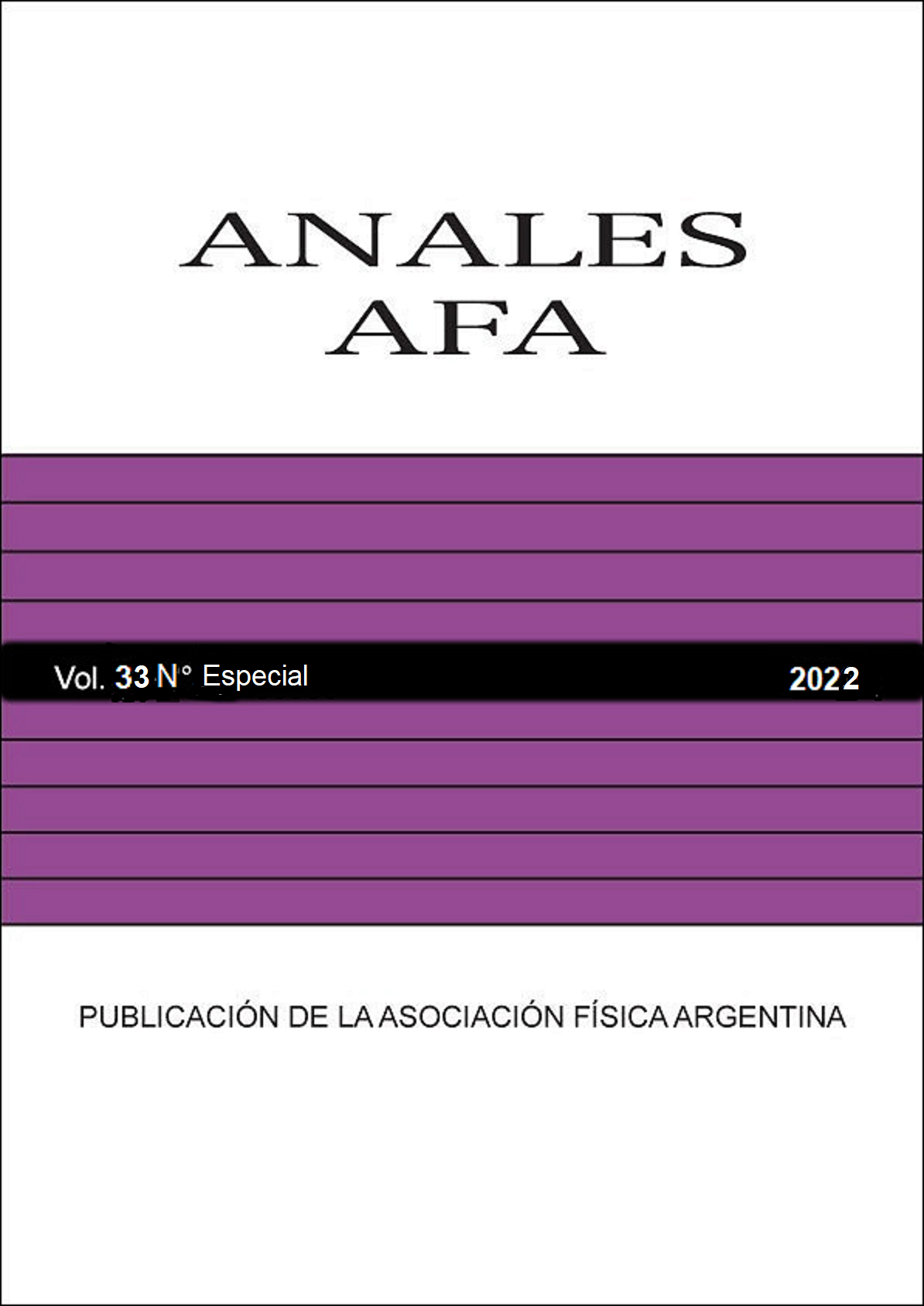OSCILLATING BUBBLES RISING IN A DOUBLY CONFINED CELL
Abstract
The motion of bubbles rising in confined geometries has gained interest due to its applications in mixing and mass transfer processes, ranging from bubble column reactors in the chemical industry to solar photobioreactors for algae cultivation. In this work we performed an experimental investigation of the behavior of air bubbles freely rising at high Reynolds numbers in a planar thin-gap cell of thickness h = 2.8 mm filled with distilled water. The in-plane width of the cell W is varied from 2.4 cm to 21 cm. We focus on the influence of lateral confinement on the motion of bubbles in the regimes with regular path and shape oscillations of large amplitude, that occur for the size range 0.6 cm < d < 1.2 cm. In addition, a rise regime that consists of a vertical rise path with regular shape oscillations, that does not appear in the laterally unconfined case, is uncovered. In the presence of lateral walls, the mean rise velocity of the bubble Vb becomes lower than the velocity of a laterally unconfined bubble of the same size beyond a critical bubble diameter dcV that decreases as the confinement increases (i.e. as W decreases). The influence of the lateral confinement on the bubble mean shape can be determined from the change in the mean aspect ratio χ of the ellipse that best fits the bubble contour at each instant. It is observed that bubbles become closer to circular (χ closer to 1) as the confinement increases. The departure from the values of χ of the laterally unconfined case occur at a critical diameter dcχ that is lower for greater confinement and also greater than dcV for each confinement, thus indicating that the effect of the lateral confinement is seen earlier (i.e. on smaller bubbles) on the velocity than on the aspect ratio. Assuming that the wall effect is related to the strength of the downward flow generated by the bubble, we introduce the mean flow velocity in the space let free for the liquid between the walls and the bubble, Uf , that can be estimated by mass conservation as Uf = dVb/(W − d). We further introduce the relative velocity between the bubble and the downward fluid in its vicinity Urel = Vb +Uf = Vb/ξ , where ξ = 1−d/W is the confinement ratio of the bubble. We found that, for a given bubble size in the oscillatory regime, Urel is approximately constant for all the studied values of W, and matches closely the value in the absence of lateral confinement. This provides an estimation, at leading order, of the bubble velocity that generalizes the expression proposed by Filella et al. (JFM, 2015) and accounts for the additional drag experienced by the bubble due to the lateral walls. We then show that, for given d and ξ , the frequency and amplitudes of the oscillatory motion can be predicted using the characteristic length and velocity scales d and Urel.




